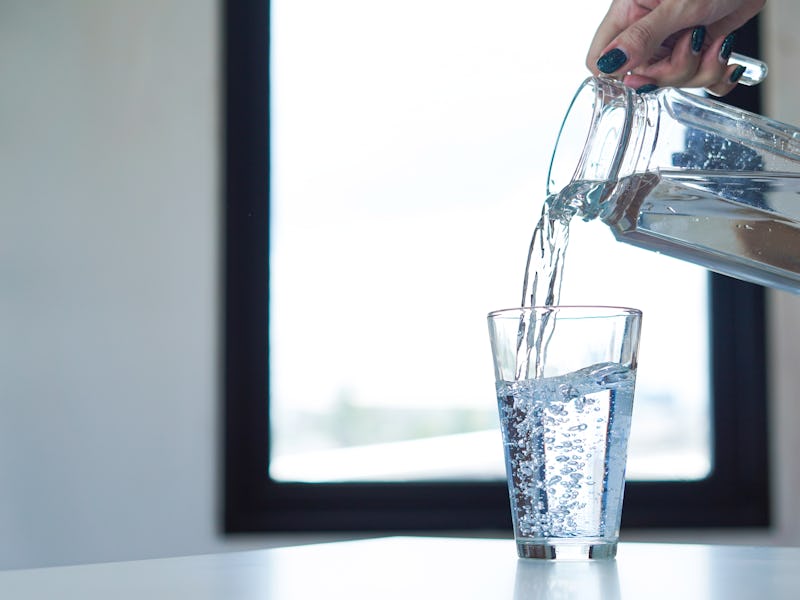Water filters are bad at one incredibly important job, study shows
Home water filtration systems vary greatly in how well they do their jobs.

Buying a water filter for your fridge or tap might seem like the ultimate adult move: taking steps toward better health and safety, giving yourself more voluntary responsibility. But is your pitcher actually making any difference whatsoever to the quality of your water?
New research suggests that home water filters do not work in one incredibly important way — they are completely inconsistent when it comes to filtering out toxic chemicals called per- and poly-fluoroalkyl substances, or PFAS. These chemicals carry serious health risks for humans, including kidney cancer and thyroid disease.
But in a study of 89 different filters, even the most-effective filters do not appear to fully remove these toxic substances, the results suggest.
The findings are detailed in a study published Wednesday in the journal Environmental Science & Technology Letters.
PFAS in water
The researchers tested 76 point-of-use filters — these are water filters we use every day in the home, like a Brita pitcher, or a faucet attachment available in a home goods store. They also tested 13 point-of-entry, or whole-house systems, which you can install in your house to filter water as it enters your home and before it gets to your tap. Researchers took water samples from homes around several counties in North Carolina, and tested for PFAS and other chemicals.
PFAS are a known health hazard — and they are shockingly ubiquitous. They have shown up in our takeout containers and even food. Thanks to their strong fluorine and carbon bonds, these “forever chemicals” take thousands of years to degrade. When plastic containing PFAS ends up in landfills, the substances can leech out as the plastic wastes, making their way into drinking water.
Here in the United States, we are privileged to have access to some of the highest-quality drinking water in the world. But a May 2019 report revealed that 43 states have sites with PFAS-contaminated groundwater.
As Inverse reported at the time, 8 percent of American drinking water doesn’t meet Environmental Protection Agency standards for contamination.
So depending on where you live, filtering your water at home may be a smart move. But according to the new study, only certain types of filters will actually get rid of PFAS chemicals.
Water filters come in all shapes and sizes — but do they work?
Water filters, ranked
- Under-sink water filters
Turns out the most effective water filters available are under-sink filters. These systems use a process called reverse osmosis and filter water in two stages. If it sounds more complicated than buying a pitcher for your fridge, that is because it is. These systems have to be installed by a professional, and they are expensive: They start at around $200, according to Home Depot — and the price just goes up from there.
- Activated-charcoal filters
More affordable filters, like the activated charcoal filters used in many pitchers and faucet attachments, were “inconsistent and unpredictable” in their effectiveness, the researchers found. On average, these filters removed about 73 percent of PFAS chemicals — but that means in some cases they were fully effective, and in others they hardly did anything.
Interestingly, the researchers didn’t observe any clear connections between effectiveness and brand, filter age, or chemicals in the original water source. From these data, it is impossible to say whether Brita is better than Whirlpool at filtering out PFAS.
- Whole-house filters
Whole-house treatment systems are designed to filter all the water coming into your home. But despite their expense (they can run into the thousands of dollars) and their scope, they did not perform well.
“The whole-house systems were also widely variable and in some cases actually increased PFAS levels in the water," lead author Heather Stapleton said in a statement.
How to filter PFAS from water: Go to the source
More effective than trying to filter water once it is already inside people’s homes, experts say, would be working toward stopping PFAS chemicals at their source.
That means cutting down on PFAS-laden plastic packaging, chemicals like Teflon (the non-stick coating on your favorite pans), cleaning products, and a whole host of other substances, the EPA recommends.
Ultimately, cleaning up water means doing it at the source.
Abstract: Per- and polyfluoroalkyl substances (PFASs) have come under increased scrutiny due to concerns about their potential toxicity and prevalence in the environment, particularly drinking water. PFASs are difficult to remove in fullscale water treatment systems because of their physicochemical properties. Here we evaluated the effectiveness of point-of-use (POU) and point-of-entry (POE) residential drinking water filters in removing a suite of three perfluoroalkyl sulfonic acids, seven perfluoroalkyl carboxylic acids, and six per- and polyfluoroalkyl ether acids in homes in central (n = 61) and southeastern (n = 12) North Carolina. POU systems included countertop and pitcher filters, faucetmounted filters, activated carbon block refrigerator filters, activated carbon block under-sink filters, under-sink dual-stage filters, and under-sink reverse osmosis filters. All under-sink dual-stage and reverse osmosis filters tested showed near complete removal for all PFASs evaluated. In contrast, all other filters containing activated carbon exhibited variable PFAS removal. In these filters, PFAS removal efficiency was dependent on chain length, with long-chain PFASs (∼60−70% removal) being more efficiently removed than short-chain PFASs (∼40% removal). A few whole-house activated carbon POE systems (n = 8) were also evaluated; however, results were variable, and in some cases (four of eight systems), increased PFAS levels were observed in the filtered water.